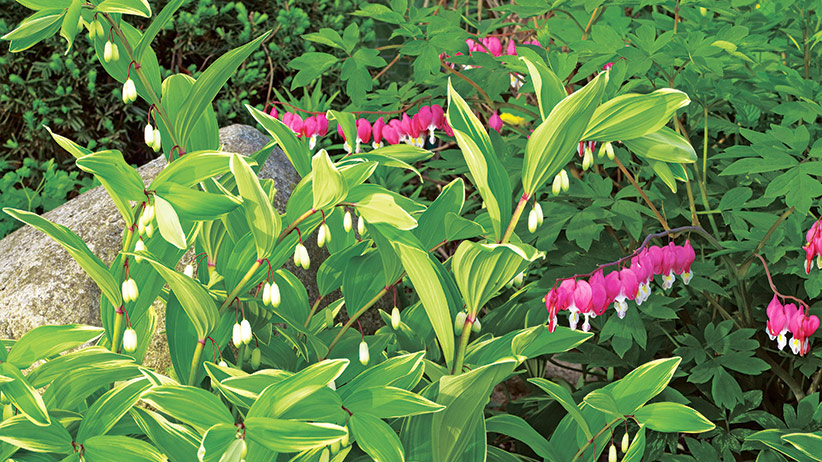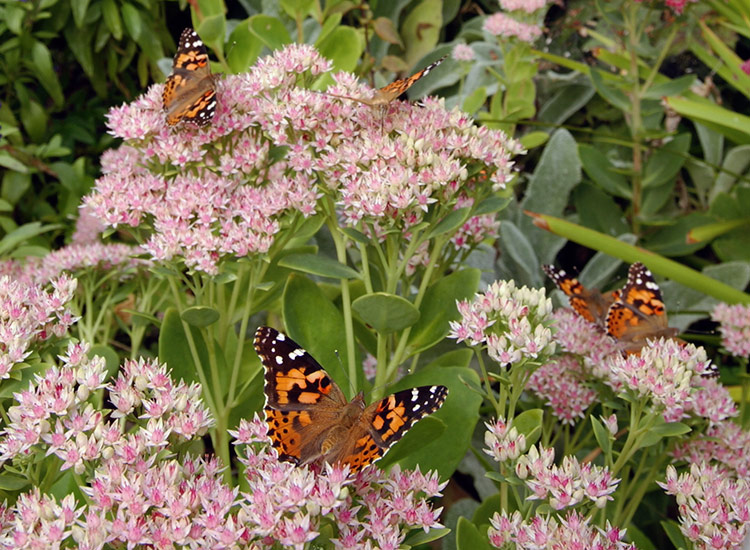
Common garden butterflies
If you’ve ever wondered which butterfly you were seeing in your garden, this guide will help you identify five common ones that you might see. For each butterfly, you’ll see some host plants for egg laying and food for the caterpillars as well as nectar plants to feed the adults. These all live in North America and are pretty widespread
As with so many beautiful things, there’s more to these pretty butterflies than meets the eye. So you’ll also find some cool facts about each one to help you get to know them just a little better.
Check Out Our Beautiful Butterfly-Friendly Garden Plan
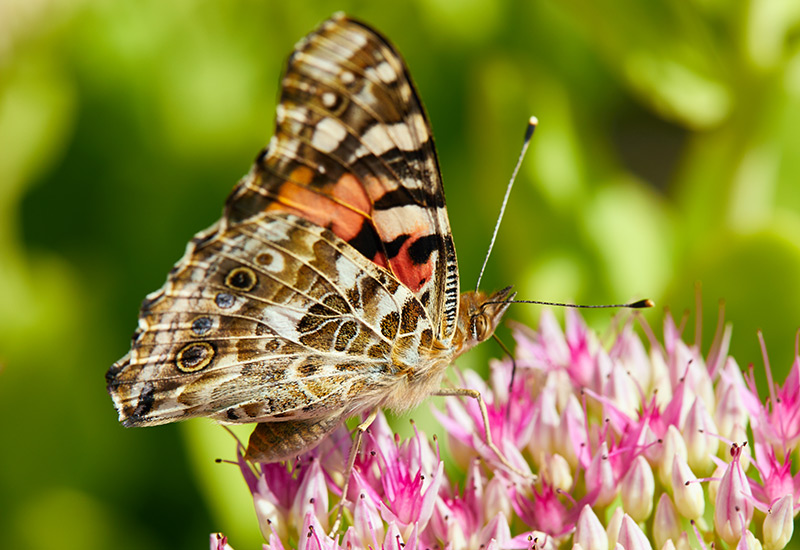
Painted lady (Vanessa cardui)
Painted ladies are typically found in the northern United States and southern Canada from March to October and in Texas and Mexico from October to April. Their hind wings have four small eyespots. Look for adult males establishing and defending their territory late in the afternoon to attract a mate. Their wingspan is 2 to 3 in. wide.
Nectar plants
- Purple coneflower (Echinacea purpurea)
- Verbena (Verbena spp. and hybrids)
Host plants
- Thistle (Cirsium spp.)
- Hollyhock (Alcea rosea)
YOU MIGHT ALSO LIKE
How to design a garden to attract more pollinators
Fall container for butterflies
5 ways to bring more butterflies to your garden
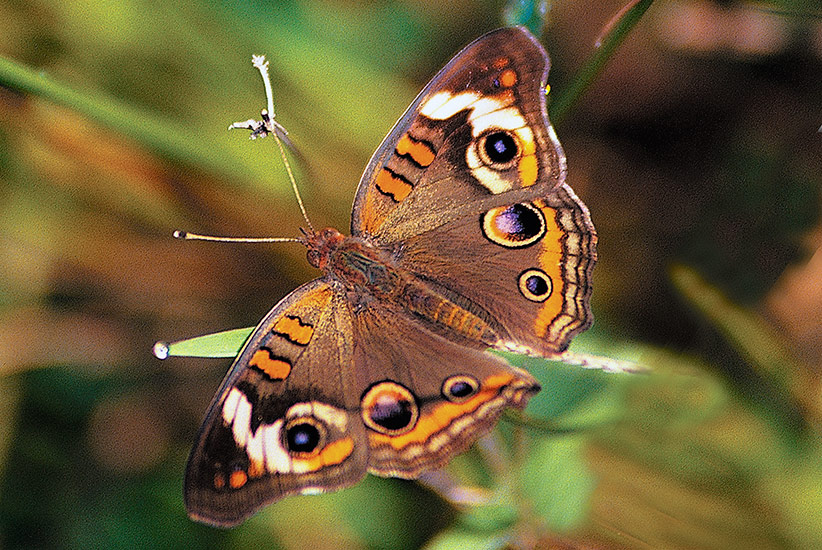
Common buckeye (Junonia coenia)
Common buckeyes know the meaning of a lazy summer day! Adults, especially males, sometimes spend hours basking in the sun. Common buckeye caterpillars are easily startled and fall to the ground at the first sign of danger. It’s a snap to identify common buckeyes — just look for the three eyespots on each set of wings. Their wingspan is 2¼ in. wide.
Nectar plants
- Cosmos (Cosmos spp. and hybrids)
- Sedum (Sedum spp. and hybrids)
- Lantana (Lantana camara)
Host plants
- False foxglove (Agalinis purpurea)
- Plantain (Plantago major)
- Snapdragon (Antirrhinum majus)
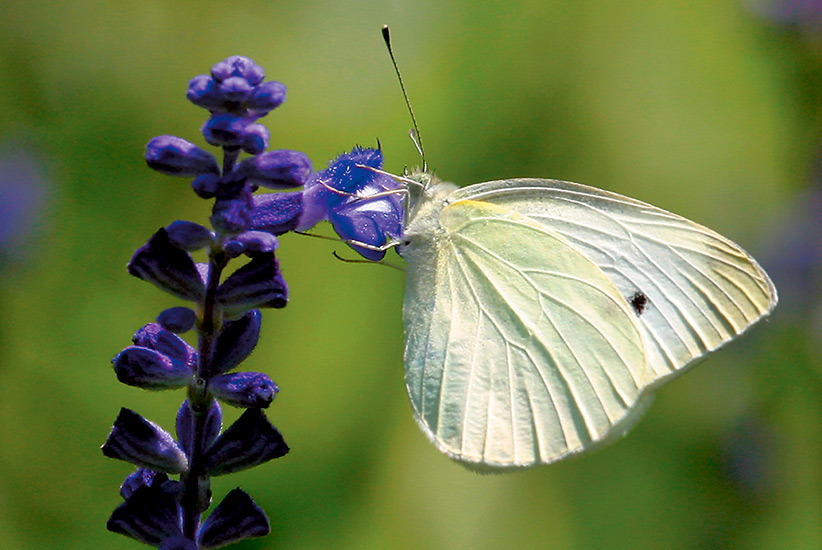
Cabbage white (Pieris rapae)
Cabbage whites are usually the first butterflies you will spot in the spring, and they hang around for months. Caterpillars feed heavily on host plants — plant extras to share with them. Males have one black dot on their top wings and females have two. Cabbage whites arrive in early spring and stay until late fall, even in colder climates. Their wingspan is 1½ in.
Nectar plants
- Verbena (Verbena spp. and hybrids)
- Cosmos (Cosmos spp. and hybrids)
Host plants
- Radish (Raphanus sativus)
- Cabbage (Brassica oleracea capitata)
Check Out More Beneficial Garden Insects

Viceroy (Limenitis archippus)
Viceroys have a distinctive black line across the lower wings. Predators often mistake viceroys for the similar-looking but bad-tasting monarchs and avoid eating them. Adults love rotting fruit. These butterflies are rare in the Southwest and along the Pacific coast. Their wingspan is 3 in. wide.
Nectar plants
- Purple coneflower (Echinacea purpurea)
- Milkweed (Asclepias spp.)
Host plants
- Poplar (Populus spp.)
- Apple (Malus hybrids)
Learn How To Harvest & Plant Milkweed Seeds in Your Garden

Pearl crescent (Phyciodes tharos)
The pearl crescent can be identified by its low, fast, erratic flight pattern. Predominantly orange and brown, females have more black coloring, while males have more orange. Females lay clusters of eggs (up to 200!) on asters but you don’t have to worry about your garden. Pearl crescent caterpillars do very little damage, so your flowers will still look great! Their wingspan is 1¼ in. wide.
Nectar plants
- Marigold (Tagetes spp. and hybrids)
- Verbena (Verbena spp. and hybrids)
Host plant
- Aster (Symphyotrichum spp. and hybrids)
Learn More About Nectar & Host Plants of Different Butterflies










